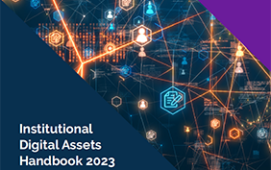In the world of capital markets, the term low latency isn’t new. When we think about exactly who is benefiting from real-time updates, the sell-side investment banks, brokerage firms who are selling assets, securities or the latest derivative typically come to mind. We do not usually associate the advising institutions directly focused on buying – such as private equity firms or asset managers – with high speed trading. Traditionally, the buy-side has adopted a more cautious approach, focusing on how much return can be achieved from the risk outlaid in the initial trade by going through the normal sales trader route. But is this about to change? Are we about to see asset management firms turning their attention to a more automated route that requires ultra-low latency capabilities?
To date. the majority of buy-side participants have not received any direct benefits from their applications being hosted in a data centre close to the exchange. They have only required a standard hosted data centre to carry out their activities. This is in contrast to sell-side firms, e.g. the proprietary trading houses, who depend heavily on the data centre being as close as possible to the exchange for ultra-low latency allowing them to execute their algorithmic trading strategies fast, gaining that all important speed advantage to market liquidity over their competitors. Sell side prop traders exploit the very latest technologies to achieve the lowest possible latency. Their market makers and traders use powerful algorithms to buy and sell. This aims to exploit tiny and fleeting price differences that appear on and between markets. By contrast the buy-side institutions typically amalgamate their fund managers order flow through a central trading desk, which routes through to chosen brokers by screens, phone or even email and thus on to the markets
There does, however, seem to be change afoot. While the majority of buy-side participants do not currently look towards lower latency to execute their trading strategies, certain fund managers are starting to explore the different ways they can divide orders into smaller amounts to help them move in or out of a position without alerting the rest of the market, and thus changing the price. This strategy can help achieve better price discovery and greater margins, a growing need in a deeply fragmented and volatile market. Executing orders on behalf of a client to ensure activity reflects market price improvements, and providing speed and statistics on how likely the execution of the trade is where low latency will make a difference.
For the buy-side, this is important for trading activities that cover asset classes such as fixed income and foreign exchange (FX). The on-going uncertainty surrounding the Eurozone demonstrates why it is becoming increasingly important for all FX market participants to look towards secure low-latency connections to achieve the best possible prices. In addition to getting the best prices, a fund manager can take direct control of their trading strategies and gain more flexibility in choices for trade execution, including direct market access (DMA). This is supported by a recent paper by research firm Celent, which highlights some advantages to the increased electronic trading of certain fixed income and FX instruments for the buy-side. While not all asset management groups will jump on the low latency bandwagon, for those that do adopt this direct order approach speed will become increasingly important as the trading world becomes increasingly more automated.
The buy-side participants who end up using ultra low latency will be those who see the value of dividing their orders into more manageable chunks. These will be the buy-side firms that believe that they can bypass the sales trader route to detect new trends in the market to seek out the best available prices, increasing their margins and longer term returns.
Subscribe to our newsletter




